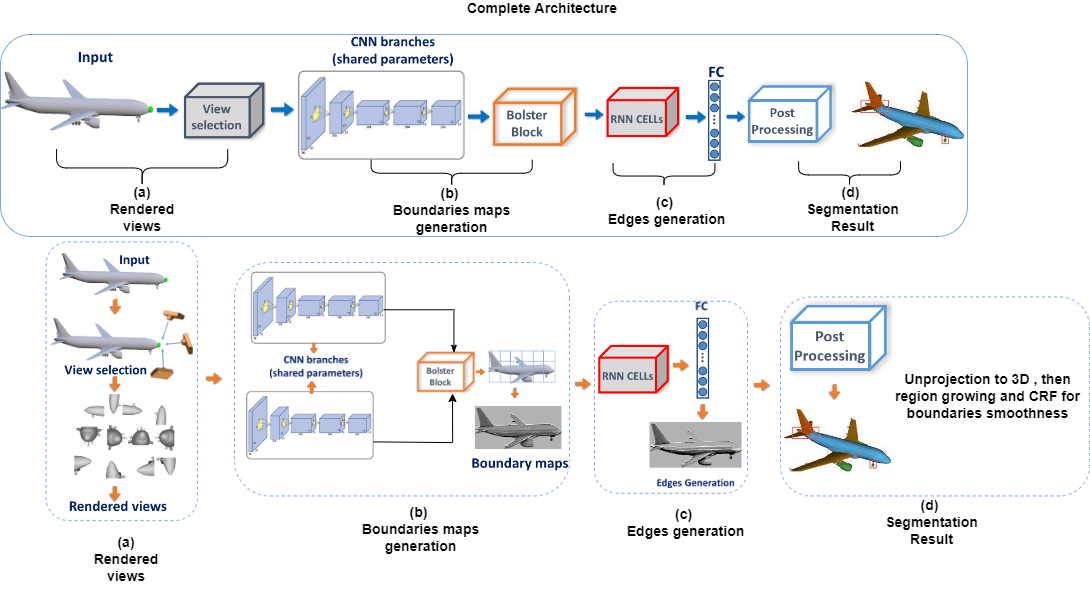 Open Access
Open Access
ARTICLE
A Deep Learning Approach to Mesh Segmentation
1
Department of Computer Science, School of Informatics, Xiamen University, Xiamen, 361005, China
2
Shenzen Research Institute, Xiamen University, Shenzen, 518000, China
3
College of Computer Science and Engineering, University of Hafr Al Batin, Hafr Albatin, 39524, Saudi Arabia
* Corresponding Author: Yunqi Lei. Email:
Computer Modeling in Engineering & Sciences 2023, 135(2), 1745-1763. https://doi.org/10.32604/cmes.2022.021351
Received 10 January 2022; Accepted 21 June 2022; Issue published 27 October 2022
Abstract
In the shape analysis community, decomposing a 3D shape into meaningful parts has become a topic of interest. 3D model segmentation is largely used in tasks such as shape deformation, shape partial matching, skeleton extraction, shape correspondence, shape annotation and texture mapping. Numerous approaches have attempted to provide better segmentation solutions; however, the majority of the previous techniques used handcrafted features, which are usually focused on a particular attribute of 3D objects and so are difficult to generalize. In this paper, we propose a three-stage approach for using Multi-view recurrent neural network to automatically segment a 3D shape into visually meaningful sub-meshes. The first stage involves normalizing and scaling a 3D model to fit within the unit sphere and rendering the object into different views. Contrasting viewpoints, on the other hand, might not have been associated, and a 3D region could correlate into totally distinct outcomes depending on the viewpoint. To address this, we ran each view through (shared weights) CNN and Bolster block in order to create a probability boundary map. The Bolster block simulates the area relationships between different views, which helps to improve and refine the data. In stage two, the feature maps generated in the previous step are correlated using a Recurrent Neural network to obtain compatible fine detail responses for each view. Finally, a layer that is fully connected is used to return coherent edges, which are then back project to 3D objects to produce the final segmentation. Experiments on the Princeton Segmentation Benchmark dataset show that our proposed method is effective for mesh segmentation tasks.Graphic Abstract

Keywords
Cite This Article
 Copyright © 2023 The Author(s). Published by Tech Science Press.
Copyright © 2023 The Author(s). Published by Tech Science Press.This work is licensed under a Creative Commons Attribution 4.0 International License , which permits unrestricted use, distribution, and reproduction in any medium, provided the original work is properly cited.


 Submit a Paper
Submit a Paper Propose a Special lssue
Propose a Special lssue View Full Text
View Full Text Download PDF
Download PDF Downloads
Downloads
 Citation Tools
Citation Tools